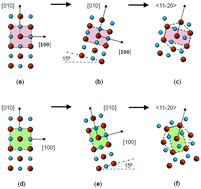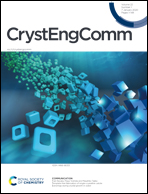Induced crystallographic changes in Cd1−xZnxO films grown on r-sapphire by AP-MOCVD: the effects of the Zn content when x ≤ 0.5
Abstract
High-resolution X-ray diffraction, scanning electron microscopy and transmission electron microscopy techniques were used to investigate, as a function of the nominal Zn content in the range of 0–50%, the out-of-plane and in-plane crystallographic characteristics of Cd1−xZnxO films grown on r-plane sapphire substrates via atmospheric pressure metal–organic chemical vapor deposition. The study is conducted to search for knowledge relating to the structural details during the transition process from a rock-salt to a wurtzite structure as the Zn content increases in this CdO–ZnO system. It has been found that it is possible to obtain films exhibiting a single (001) cubic orientation with good crystalline quality up to a Zn content of about 10%. For zinc content values higher than 15%, the films become polycrystalline, with two main domains inclined with respect to the plane perpendicular to the surface that contains the c-axis of sapphire. The domains have a tilt that tends asymptotically to ±15° with the Zn content, and the cubic cell presents strong orthorhombic distortion. These two crystallographic domains (orientations) cannot be observed via conventional XRD measurements and are supposed to form part of an intermediate orthorhombic phase in the transition from a rock-salt structure towards a wurtzite structure, which finally appears at higher Zn content values.



 Please wait while we load your content...
Please wait while we load your content...